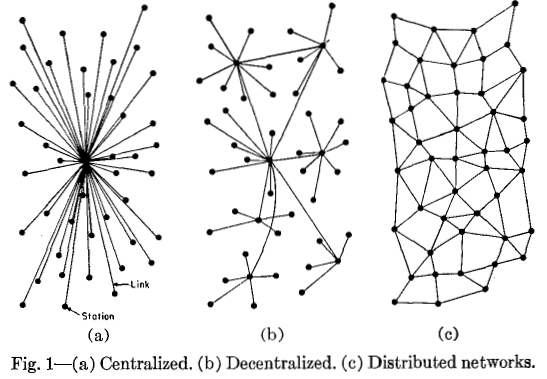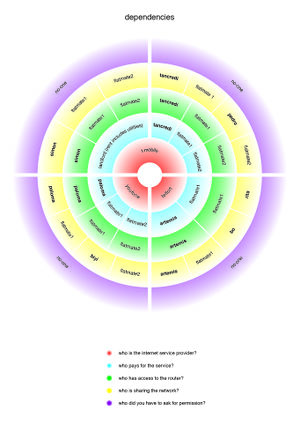User:Simon/Special Issue 8/summary first half trim: Difference between revisions
No edit summary |
|||
| Line 8: | Line 8: | ||
[[File:19 01 20 dependencies.jpg|frameless]] | [[File:19 01 20 dependencies.jpg|frameless]] | ||
==Physical map in studio== | ==Physical map in XPUB studio== | ||
I made a map of the location of homeservers and routers, including the other (non-XPUB) network users as well as situations where it was not possible for XPUB students to connect their server to their home router, and so had to depend on others. I connected a piece of string I'd tied knots in to represent my external IP address for my home server, as a way to visualise the idea of connecting and also the route that a client follows when connecting to my website, which is in reverse from the way I would display my IP. | |||
[[File:IMG 7914.JPG|frameless]] | |||
[[File:IMG 7915.JPG|frameless]] | |||
[[File:IMG 7916.JPG|frameless]] | |||
[[File:IMG 7918.JPG|frameless]] | |||
==Collection of texts== | ==Collection of texts== | ||
Revision as of 11:19, 12 February 2019
Mapping network topologies
Paul Baran diagrams
Dependency mapping task
Physical map in XPUB studio
I made a map of the location of homeservers and routers, including the other (non-XPUB) network users as well as situations where it was not possible for XPUB students to connect their server to their home router, and so had to depend on others. I connected a piece of string I'd tied knots in to represent my external IP address for my home server, as a way to visualise the idea of connecting and also the route that a client follows when connecting to my website, which is in reverse from the way I would display my IP.
File:IMG 7914.JPG File:IMG 7915.JPG File:IMG 7916.JPG File:IMG 7918.JPG
Collection of texts
I've begun collecting relevant texts to my research and creating html pages to store them on my website. This has been a useful way to develop my web design knowledge and skills as well as provide theoretical basis for the research I'm undertaking into network topologies.
Tung-Hui Hu: Truckstops on the Information Superhighway http://b-e-e-t.r-o-o-t.net/pages/truckstops_on_the_information_superhighway.html
Paul Rand: Cybernetic Guerilla Warfare (Radical Software 1.3) http://b-e-e-t.r-o-o-t.net/pages/cybernetic_guerilla_warfare.html
R. Buckminster Fuller: Software (Radical Software 1.1) http://b-e-e-t.r-o-o-t.net/pages/buckminster_fuller_software.html
models such as klein worms, Ant Farm's Truckstops map gave me a way to visualise alternative approaches to mapping a network beyond the Baran models
Concept of paranode as suggested in Constant's Feminist Server Manifesto, and further explored by Zach Blas > I see paranode as a disruptive device, also not to do with physical devices (established as nodes, but instead on social and conceptual relations between people and the world)
Questions around mapping and autonomy vis a vis the map/territory problem & Hakim Bey's Temporary Autonomous Zones https://pad.xpub.nl/p/map_thoughts
Exploration of topology: Knot theory, Inca Quipu, Jacqueline de Jong's Situationist Times (particularly Issue 3: Topology), psychogeographic mapping of urban spaces as explored by SI derive
Seven Bridges of Königsberg (now Kaliningrad, Russia) as prefigure to topology and laying foundations for graphology (a graphic mapping of topologies)
Drawings of network devices - trying to visualise the invisible
Modularity
Small sculptural models of theoretical network topologies - knots
Loops laid into interface - modular Inspired by presentation of Plumbutter2 modular synthesiser


